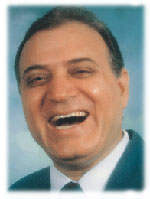
Maude (henceforth called because of her similarity with the character of the same name from Harold & Maude, similar in her hyperkinetic movements and pacing of speech) has since had her MR Spectroscopy. It did help in characterizing whether her left temperoparietal lesion was a tumor or not. Since her lesion encompasses Wernicke's area, a biopsy was deferred as not to cause irreparable damage, because the changes seen on MRI could be post-ictal. For this reason another MRI will be obtained in a month when I will see her again in clinic.
Her hospitalization also included continuous EEG monitoring. Her untreated EEG revealed left temporal spikes and waves with left hemispheric slowing. This improved with Dilantin and a trial of Valium. When the Valium was withdrawn, her EEG again looked worse but did not show epileptic activity. She was discharged from the hospital on Dilantin and Phenobarbital. The addition of Phenobarbital allowed her the best night of sleep in some time.
Throughout her stay, her aphasia did not resolve. (I noted above that her pacing of speech was like Maude. The content was often unintelligible.) She continuously made paraphasic errors, showed difficulty with comprehension, perseverated, demonstrated some left-right confusion, but was never disoriented. Most of the time she was aware of her errors, but was unable to correct them.
Lastly by the time of discharge her arthritic pain had returned. The pain that had plagued her for years, then vanished for three weeks, was suppressed for three weeks. The correlation with her neurologic disease (whatever it is) is clear; the explanation is much less so. The fact that her pain returned with the initiation of antiepileptics suggests an answer.






